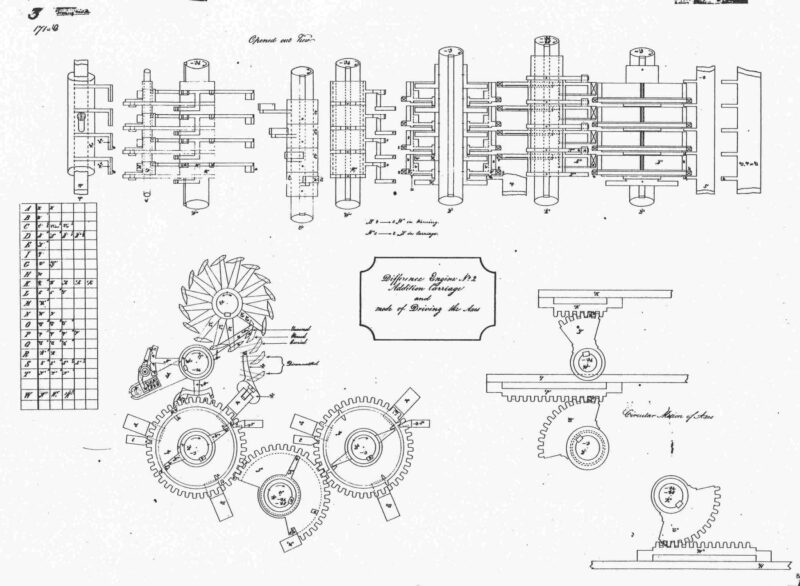The Difference Engine is an automatic mechanical calculator designed to tabulate polynomial functions. It was designed in the 1820s by Charles Babbage.
The Difference Machine marks the transfer of human calculating to mechanical calculating machines using automata and algorithms.
Goal was the calculation of error-free mathematical tables, especially for nautical and logarithmic use.
The designed Difference Engine No. 1 served to calculate polynomial functions. It was not completed during Babbage’s lifetime.
The Difference Machine No 2 was built in 1991. It has 8’000 parts in a cube of 3 x 3 x 1.5 m and works correctly.
Copying nautical or logarithmic tables is tedious work and even more prone to errors. The English mathematician Charles Babbage therefore suggested to the British Admiralty to build a machine for this purpose. Inspired by the new mechanical looms and by the development of automata in the emerging watchmaking industry. He combined rollers and cams in order to apply mathematical operations, which always remained the same, to different initial values with constant precision. He thus created the first, still purely mechanical calculators in the 19th century. They are the precursors of today’s computers. Ada Lovelace developed the programs to run these machines. s are created that can also reproduce irregular movements as well as forward and backward movements. Babbage clocks are, in a sense, ‘non-linear’ clocks. Their microprocessors open up elements of complex rules (algorithms) to modern haute horlogerie, that we know otherwise from computers.











